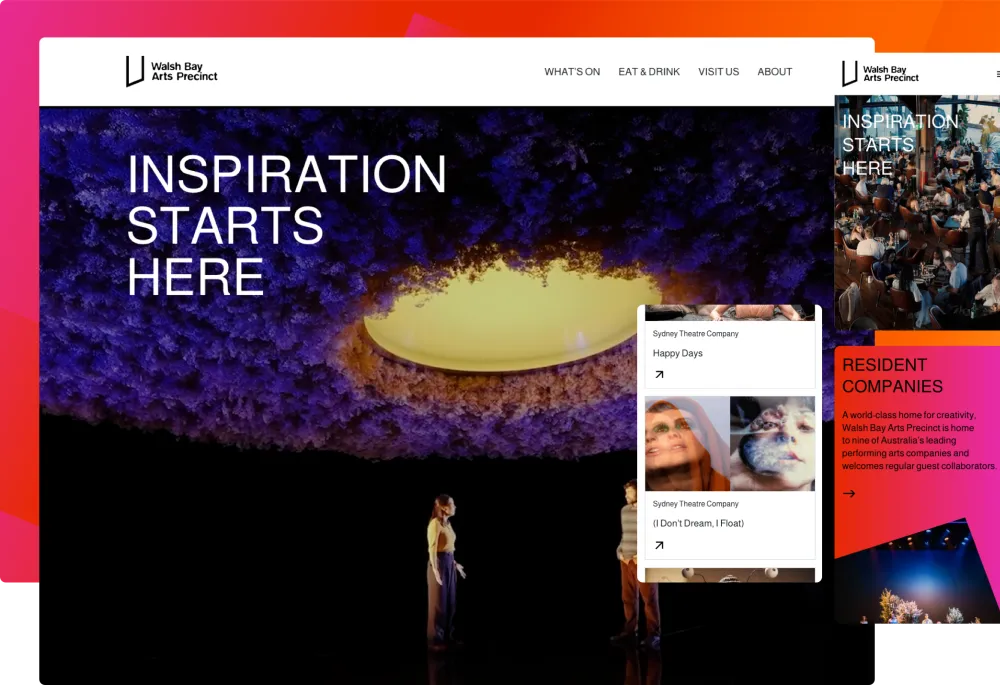Sector(s)
The University of Namur (UNamur) embarked on an ambitious project to unify fifty websites into a single, cohesive platform designed to deliver an excellent user experience. This new platform targets various personas such as students, prospective students, parents, faculty, researchers, and partners, with the goal of clearly communicating the institution's offerings and values.
Through leveraging Drupal's robust capabilities, the project aimed to effectively present the university, drive new enrollments, and facilitate seamless interaction between users and content.
Goals
The primary objectives of the UNamur website project were to:
- Present the institution: Showcase the university's strengths, achievements, and offerings through a cohesive online presence.
- Drive enrollment: Enhance conversion rates for new student registrations by providing relevant information in a structured manner.
- Create a unified platform: Transition from 50 independent sites to a single, modern, and flexible platform that can grow with the university's needs.
- Enhance user experience: Deliver a pleasant and intuitive experience for all user personas, ensuring each can easily navigate and find relevant information.
- Communicate clearly: Ensure that communication is tailored to various personas, with clear paths and navigation to relevant content.
Challenges
The UNamur project faced several significant challenges throughout its development. One of the primary issues was rationalizing fifty separate websites into a single platform. This required careful planning and execution to ensure that all content was integrated smoothly without compromising usability or content integrity.
Additionally, catering to the diverse needs of multiple personas—ranging from students and parents to faculty members and external partners—demanded a flexible yet structured approach to content organization. This diversity necessitated a design that could support various user journeys while maintaining consistency and coherence across the platform.
Moreover, the need for complex integrations with third-party systems posed a challenge, requiring a robust and adaptable architecture capable of managing these intricate connections seamlessly.
Back to topImplementation
The implementation of the UNamur project took place over a year, characterized by close collaboration between the development team and the university's stakeholders. This collaboration was essential in ensuring that the platform met the specific needs and expectations of the university. Regular project management meetings and monthly steering committees provided continuous oversight and alignment, ensuring the project stayed on track and aligned with UNamur's broader goals.
Project Team
The project core team consisted of one project manager, four developers, and one designer, each bringing their expertise to bear on the platform's development. This team worked closely with UNamur's internal team throughout the process, fostering an environment of co-construction where ongoing collaboration was key.
Development Process
The development process was structured to facilitate continuous feedback and iterative improvements. Weekly project management meetings allowed for regular progress assessments and adjustments as needed. These meetings provided an opportunity to address challenges promptly and ensure that the project maintained its trajectory toward achieving its goals.
Features and Functionality
The UNamur platform boasts a wide range of features designed to meet the diverse needs of its audience and support the university's mission. Central to this is the platform's ability to integrate seamlessly with third-party systems, ensuring that users have access to comprehensive and up-to-date information.
Third-Party Integrations
- Course Catalog Integration: The site interfaces with an external course management system to present the university's course offerings. A dedicated search engine and faceted filters enhance usability, allowing users to easily discover courses and programs relevant to their interests.
- Keycloak SSL Connection: Implementing Keycloak for SSL connection ensures secure access to the site. Staff members can authenticate through Keycloak to update personal information and access internal resources seamlessly.
- University Directory Integration: The platform interfaces with the university's internal directory to present information in various formats, including staff directories, detailed entity presentations (e.g., Boards, Committees, Services), and organizational charts. This integration allows for real-time updates and accurate representation of the university's structure.
Content Management
- Group Module: Utilizing the Group module, the platform creates distinct sections for faculties and institutes, allowing specific permissions for content created within each group. Each group maintains its own navigation, providing customized user experiences and distinct areas for different academic units.
- Paragraphs Module: A powerful toolkit for content managers, the Paragraphs module enables the creation of engaging and dynamic pages. Content editors can easily craft pages that align with the university's communication goals, supporting rich media, interactive elements, and varied content types.
Additional Features
- Global Search with Solr: A global search engine powered by Solr provides fast and accurate results, ensuring users can easily locate information across the platform.
- Event Calendar: An integrated agenda presents upcoming university events, offering filters and search options to help users discover events of interest.
- Blog Section: The blog includes a specific search engine with keyword filters, allowing users to explore posts relevant to their interests and research areas.
- Job Listings: A dedicated section for job postings highlights vacant positions within the university, offering detailed information and application instructions.
- Landing Pages for Personas: Custom landing pages cater to the unique needs of each persona, offering tailored content and navigation paths to guide users through their journey on the site.
SEO and Accessibility
Significant effort was placed on optimizing the site's SEO to ensure that the university's content ranks well in search engines. This included meticulous attention to meta tags, titles, HTML structure, alt tags, and overall content strategy. By prioritizing SEO, the university has improved its online visibility, making it easier for prospective students and other stakeholders to find and engage with its content.
Accessibility was also a key consideration, with the platform adhering to accessibility standards to ensure that all users, including those with disabilities, can interact with the site effectively. By prioritizing accessibility, UNamur demonstrates its commitment to inclusivity and equal access for all users.
Results
The launch of the new UNamur platform has resulted in a comprehensive and user-friendly site that unifies the university's diverse content and services. This achievement underscores the success of the project in meeting its primary objectives and delivering a platform that meets the needs of all users.
The platform successfully consolidates content from fifty sites into a coherent and navigable structure, providing users with a consistent experience. This unification ensures that users can easily access the information they need, regardless of their specific persona or interest area.
Improved usability is a hallmark of the new platform, with users reporting that information is easy to find thanks to the intuitive design and personalized navigation paths. This enhanced usability promotes engagement by making it easy for users to interact with the university's offerings.
The platform's engaging design and interactive features encourage users to explore and interact with the university's offerings. By providing a visually appealing and interactive experience, the platform fosters deeper connections between users and the university.
Finally, Drupal's scalability ensures that the platform can grow alongside the university, accommodating new features and content as needed. This scalability positions UNamur for future success, enabling it to continue delivering an exceptional digital experience to its users.
Conclusion
The University of Namur's new Drupal platform exemplifies a successful digital transformation, creating a modern, scalable, and engaging digital presence that meets the needs of a diverse audience. By choosing Drupal, UNamur has positioned itself as a forward-thinking institution, ready to embrace the future of digital engagement in higher education.
The collaboration between the development team and university stakeholders was pivotal in achieving this outcome, setting a benchmark for future digital projects within the educational sector. The platform not only meets but exceeds the university's digital transformation goals, ensuring a robust and engaging experience for all users.
Drupal was chosen as the backbone of the UNamur project for its unparalleled robustness, flexibility, and ability to seamlessly interface with third-party systems. These qualities made Drupal an ideal choice for handling the university's diverse and growing needs, particularly in terms of managing complex integrations and providing a personalized user experience for different personas.
The robustness of Drupal's architecture was crucial for developing a stable, secure, and high-performing platform, which is essential for a large educational institution like UNamur. Its capacity to integrate with external systems was a significant advantage, especially for connecting the university's existing systems, such as course management and directory services.
Drupal's scalability was another key factor, as it allows the platform to grow alongside the university, accommodating new features and content without compromising performance. Its modular nature supports the creation of customized solutions, enabling the university to tailor the user experience for each of its key personas effectively.

Technical Specifications
Drupal version:
Key modules/theme/distribution used:



